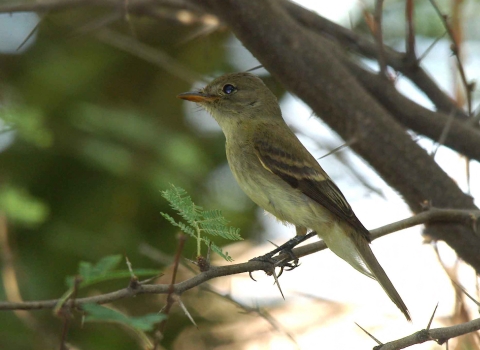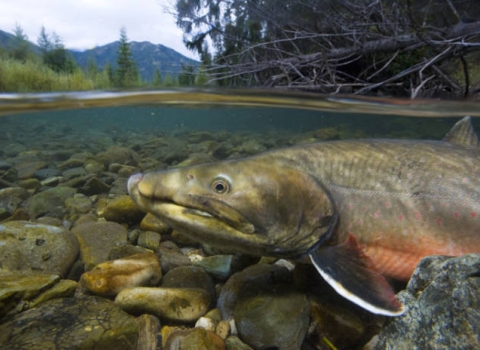AUSTWELL, Texas – Biologists from the U.S. Fish and Wildlife Service recently completed analysis of aerial whooping crane surveys conducted last winter, finding Texas’ wintering population of one of the rarest birds in North America to have topped the 500 mark for the third year in a row. The survey also recorded dozens of the endangered birds outside of the primary survey area, indicating an expansion of their winter range on the Texas coast.
“While we did not detect growth in the size of the population this year, we do continue to observe whooping cranes outside of our primary survey area, indicating they continue to expand their winter range,” said Wade Harrell, U.S. Fish & Wildlife Service Whooping Crane Recovery Coordinator. “Next year, we will be adding the Holiday Beach secondary survey area to our primary survey area given we detected enough whooping crane groups there to meet our protocol for inclusion.”
Each fall, whooping cranes make a 2,500 mile journey from their breeding grounds in Wood Buffalo National Park in Canada to their Texas wintering grounds at Aransas National Wildlife Refuge and the surrounding area. Once they have arrived, wildlife biologists with the U.S. Fish and Wildlife Service survey the birds by air and analyze population trends.
For winter 2019-20, preliminary data analysis indicated 506 whooping cranes, including 39 juveniles, in the primary survey area (approximately 153,950 acres) centered on Aransas National Wildlife Refuge. This is comparable with the prior winter’s estimate of 504 whooping cranes, indicating the population remained stable and did not experience detectible population growth this year. An additional 29 birds were recorded outside the primary survey area during the survey.
Biologists plan to conduct the next survey in January 2021 and will continue marking whooping cranes with telemetry tracking devices this winter as part of an ongoing U.S. and Canadian government joint research project.
Whooping cranes are the tallest birds in North America and have been documented to live more than 30 years in the wild. Adults generally reach reproductive age at four or five years, and then lay two eggs, usually rearing only one chick.
More information about the survey and whooping cranes can be found on the Aransas National Wildlife Refuge website at http://www.fws.gov/refuge/Aransas/ or by calling the Aransas National Wildlife Refuge Visitor Contact Station at: (361) 349-1181.
The U.S. Fish and Wildlife Service works with others to conserve, protect, and enhance fish, wildlife, plants, and their habitats for the continuing benefit of the American people. For more information on our work and the people who make it happen, visit http://www.fws.gov/. Connect with our Facebook page, follow our tweets, watch our YouTube Channel and download photos from our Flickr page.
-FWS-

